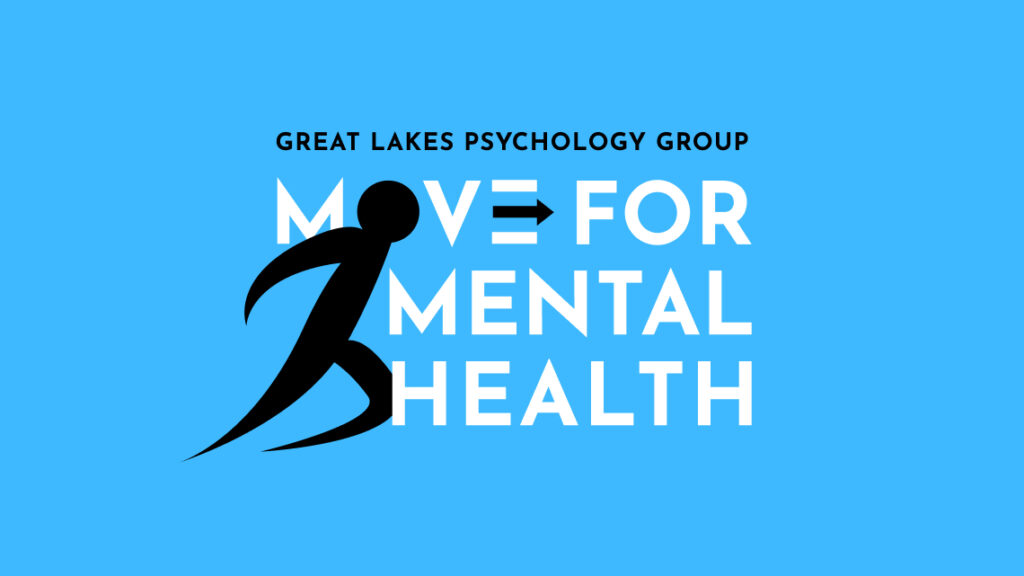May is Mental Health Awareness Month

May is Mental Health Awareness Month. Learn more about mental health with Great Lakes Psychology Group.
What is mental illness?
Mental illness is any condition that affects a person’s thinking, behavior, mood, or ability to relate to others to the point that the condition causes the sufferer a great deal of distress and/or interferes with their ability to function in daily life. Mental illness can look very different from one person to the next, and it can vary greatly in level of severity. According to the National Alliance on Mental Illness (NAMI), the most commonly experienced form of mental illness among adults in the United States are anxiety disorders, followed by depression, post-traumatic stress disorder (PTSD), bipolar disorder, borderline personality disorder, and obsessive-compulsive disorder (OCD). In all, 1 in 5 adults and 1 in 6 youth experience mental illness each year.
Mental illness is not the result of one cause; instead, research suggests that genetics, environment, and lifestyle are all important for understanding one’s susceptibility to developing mental illness. For example, someone may have a family history of depression but not experience symptoms until they’re exposed to a chronically stressful environment or a traumatic event.
Diagnosis and treatment of mental illness
Considering mental illness can present itself in many ways, treatment will depend on the symptoms and impairments the person is experiencing. Receiving a diagnosis can be a helpful place to start, as this will narrow down the interventions which are most likely to be effective. Unlike medical conditions such as high blood pressure or diabetes, there is no medical test that can accurately confirm the presence or absence of mental illness. Instead, mental health care professionals refer to diagnostic manuals which list common experiences and behaviors within a certain timeline for specific disorders in order to make diagnoses.
For many people with mental illness, recovery from symptoms is possible with the right support. Unfortunately, treatment for mental illness is largely underutilized. According to the NAMI, only 43.3 percent of adults and 50.6 percent of youth in the U.S. receive treatment for their mental illness. For those who do seek treatment, the average delay between onset of symptoms and treatment is 11 years. Further, particular populations are less likely to seek treatment for mental illness, including men and racial and ethnic minorities.
Unfortunately, mental illness left untreated tends to have downstream consequences. Those with mental illness are also more likely to experience health problems, substance use disorders, and unemployment.
Moving forward
The good news is that barriers to getting treatment are ever-evolving. For decades, stigma around mental illness has discouraged sufferers from seeking treatment for their symptoms. Over time, the global commentary on mental illness has shifted toward improving advocacy efforts, spreading awareness, and including more accurate depictions of mental illness in the media. In turn, those suffering are more likely to recognize their own symptoms of mental illness and feel empowered to find help. Additionally, getting treatment for mental illness is more accessible now than ever. Most insurance plans now include coverage for behavioral healthcare, and the proliferation of online therapy options has made it easier than ever to see a therapist.
Great Lakes Psychology Group values access to mental healthcare for all, and we believe that getting started with therapy should be simple.
Ready to prioritize your mental health?
Great Lakes Psychology Group is here to help. With an extensive network of caring therapists available to meet online or in-person, we make it easy to find the right fit for your unique needs.



